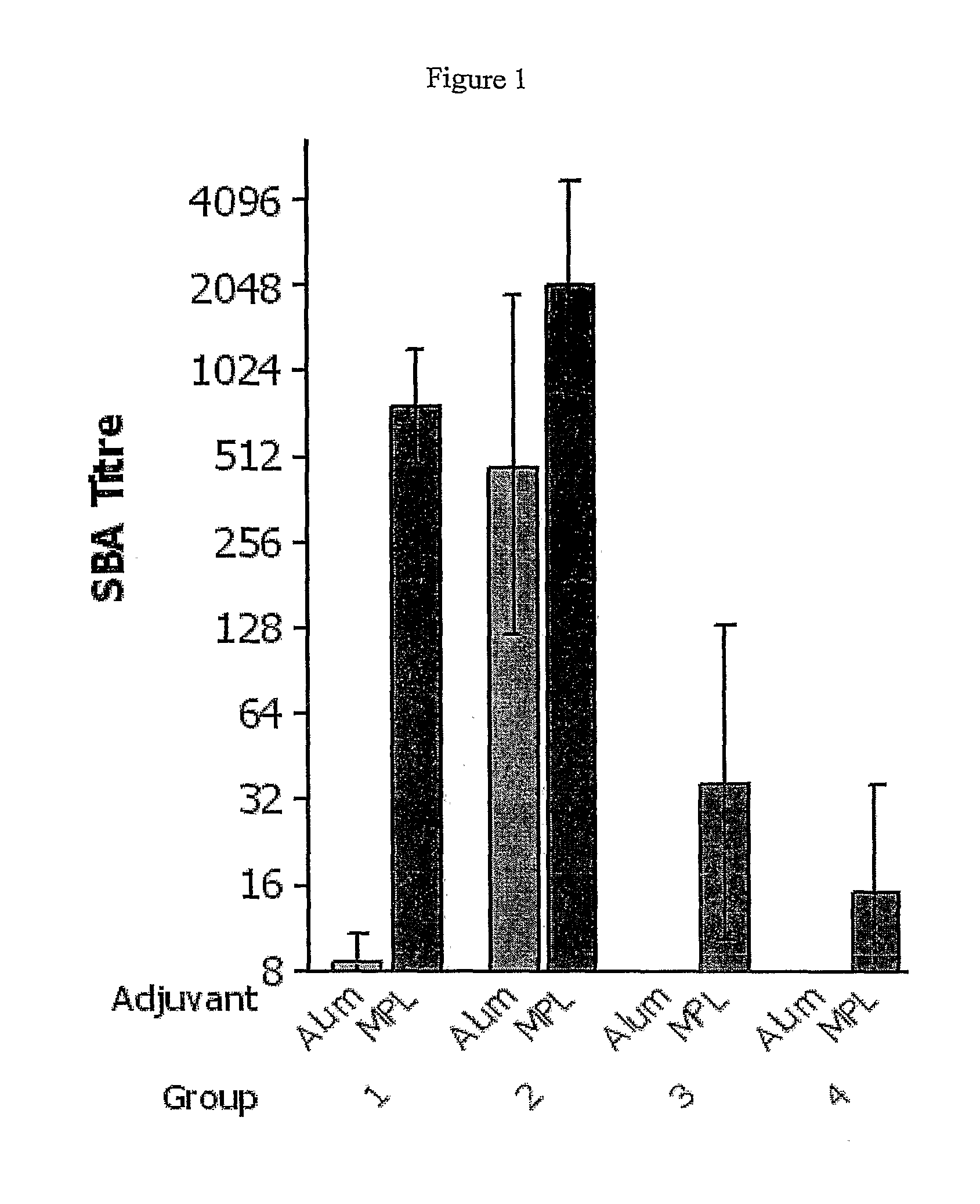Outer membrane vesicle prime-protein boost vaccine
a technology of outer membrane and vesicle, which is applied in the direction of antibacterial agents, antibody medical ingredients, immunological disorders, etc., can solve the problems brain damage, hearing loss, and serious long-term effects of survivors, and achieves the effect of enhancing the effectiveness of vaccines and promoting immune responses
- Summary
- Abstract
- Description
- Claims
- Application Information
AI Technical Summary
Benefits of technology
Problems solved by technology
Method used
Image
Examples
example
Prime Boost Strategy to Optimize the Immune Response to Meningococcal Outer Membrane Antigens
[0107]In clinical trials immunization with outer membrane vesicles (OMVs) has been shown to offer protection against disease caused by Neisseria meningitidis (Bjune et al., 1991; Sierra et al., 1991). The OMVs are extracted from the organism in the presence of detergent and contain the same complement of protein antigens as the outer membrane of the intact bacterium (Poolman et al., 2006). The protection offered by OMV vaccines tends to be strain-specific, especially in the young who are most vulnerable to infection, because the predominant bactericidal antibody response is directed against the variable PorA antigen (Tappero et al., 1999). Vaccine developers have taken diametrically opposed approaches to this problem, either searching the genome for conserved protein antigens (Rappuoli, 2001) or developing formulations based on combinations of variable protein antigens such as PorA (van den ...
PUM
| Property | Measurement | Unit |
|---|---|---|
| Time | aaaaa | aaaaa |
| Time | aaaaa | aaaaa |
| Immunogenicity | aaaaa | aaaaa |
Abstract
Description
Claims
Application Information
 Login to View More
Login to View More - R&D
- Intellectual Property
- Life Sciences
- Materials
- Tech Scout
- Unparalleled Data Quality
- Higher Quality Content
- 60% Fewer Hallucinations
Browse by: Latest US Patents, China's latest patents, Technical Efficacy Thesaurus, Application Domain, Technology Topic, Popular Technical Reports.
© 2025 PatSnap. All rights reserved.Legal|Privacy policy|Modern Slavery Act Transparency Statement|Sitemap|About US| Contact US: help@patsnap.com

